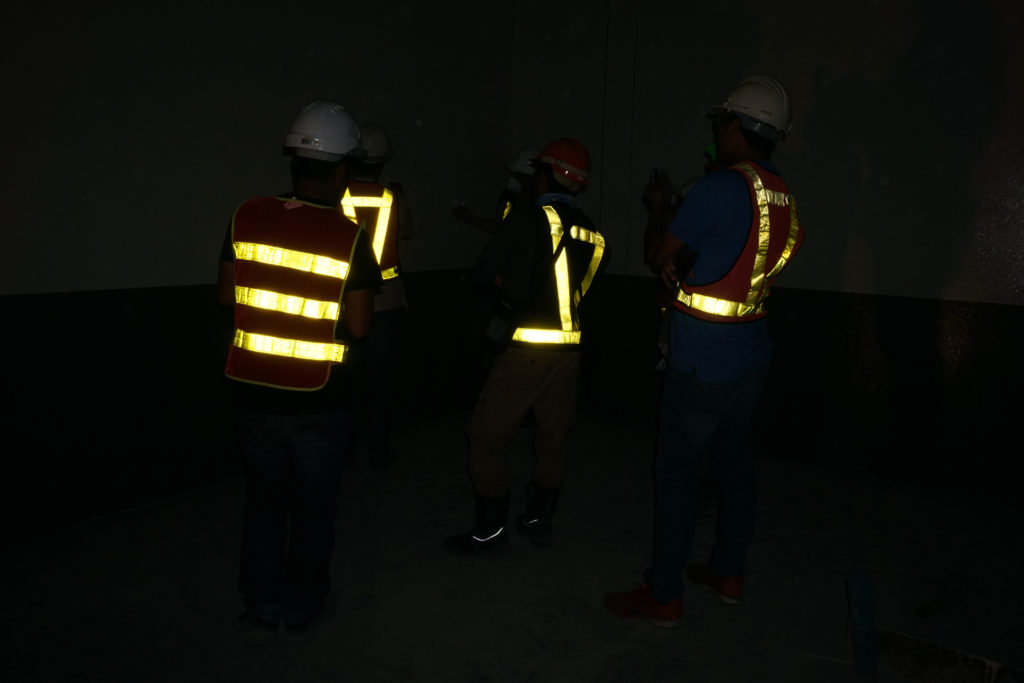There are various visibility aids marketed for vulnerable road users (VRUs). Here, the term VRU is used to describe unprotected road users such as pedestrians and bicyclists. Visibility aids are designed to increase a VRU’s contrast within their environment, making them more distinguishable from the background to a driver. These visibility aids can include both active and passive ways to increase the VRU’s contrast, therefore their visibility. As the name implies, active visibility aids actively transmit light and are powered by a source (i.e., battery powered bicycle headlights and taillights) while passive visibility aids passively reflect light coming from outside sources (i.e., fluorescent, and retroreflective clothing).
There are a wide variety of active visibility aids to choose from on the market. For example, active visibility aids can include wearable lighting systems that are used on the body of the VRU or systems that are intended to be secured to the transportation device itself. The intensity and placement of the visibility aid are significant features to consider when choosing the appropriate active visibility aid. For example, when using active lighting during the day, a higher intensity is required in order to be the most visible to drivers. At night, active lighting does not require the same intensity level it would during the day due to the darker setting. Here in a low luminance environment, a lower intensity is sufficient to increase visibility. Some lighting systems offer multiple modes in order to compensate for variable environments, however, this puts the burden on the user to select the appropriate mode for their circumstance as well as ensure their visibility aid is sufficiently charged for the duration of use. Lack of appropriate knowledge or understanding of these factors could lead to VRUs using insufficient active lightning while thinking that they have increased their visibility.

Bicyclists can use active visibility aids such as a bicycle headlight and taillight to increase their visibility on the road.
Unlike active visibility aids, passive visibility aids do not require a power source in order to function. Both retroreflective and fluorescent material can be used to passively increase a VRU’s contrast from the background. Due to the properties of the material, retroreflective material is best utilized in low illumination conditions such as nighttime, while fluorescent material is best used in daylight conditions. For example, the most appropriate use of retroreflective materials is at night when the retroreflective material reflects the forward lighting from vehicle headlights in such a way that most of the light emitting from the vehicle’s headlights is reflective back towards the vehicle and driver. Retroreflective material is less useful in the daytime due to various other light sources, such as the sun, diffusing the retroreflected beam. In contrast, fluorescent material “pops” during the day when UV light is abundant. Fluorescent materials absorb the invisible UV light from the sun and covert the invisible UV light into light rays visible to the human eye. This conversion provides more contrast between the fluorescent material and its background, therefore increasing the VRU’s visibility.

Roadway workers utilize the properties of retroreflective material to increase their visibility at night.
Both active and passive lighting serve to increase the contrast of a VRU, therefore increasing the VRU’s visibility. Increased contrast allows drivers to detect hazards more easily within the roadway environment. While increasing visibility alone may not be enough to increase VRU safety, increasing the VRU’s conspicuity plays a crucial part in enhancing safety. This distinction between visibility and conspicuity will be discussed in my next blog.
Dr. Ellen Szubski, Ph.D, CXLT, CPSI, is a human factors consultant at The Warren Group. She has a Doctorate of Philosophy in Human Factors Psychology and a Master of Science in Applied Psychology from Clemson University. She did her dissertation on “The Influence of Pedestrian Biological Motion on Time-To-Collision Estimates at Night”. She is also a Certified XL Tribometrist and a Certified Playground Safety Inspector. Prior to entering the forensic field, Ellen planned and conducted experiments for a major bicycle manufacturer. She also conducted laser strike perception studies for the Department of Defense. Ellen applies her experience in Human Factors to the analysis of crash investigations and other personal injury matters. These matters often include collisions involving vulnerable road users and drivers, driver distraction, and slips, trips, and falls. She utilizes her knowledge of OSHA regulations, codes, and standards in her analysis of premises liability incidents and safety consulting. Ellen is a current member of the Human Factors and Ergonomics Society (HFES) and it’s Forensic Professional Technical Group.



